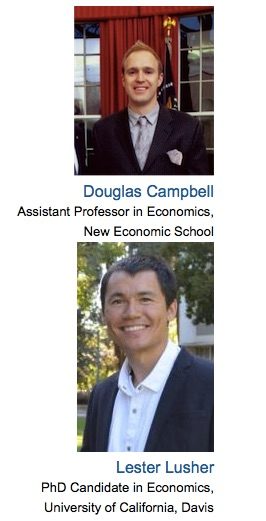
Nick Shaxson ■ More evidence of the links between tax and inequality

 The economists Thomas Piketty, Emmanuel Saez, Facundo Alvaredo and Anthony Atkinson have played a big role in helping analyse and popularise the role that tax rate cuts for wealthy folk play in fostering economic inequality, particularly the income shares of the top 1 percent of people compared to everyone else. As they put it in 2013:
The economists Thomas Piketty, Emmanuel Saez, Facundo Alvaredo and Anthony Atkinson have played a big role in helping analyse and popularise the role that tax rate cuts for wealthy folk play in fostering economic inequality, particularly the income shares of the top 1 percent of people compared to everyone else. As they put it in 2013:
“The evolution of top tax rates is strongly negatively correlated with changes in pre-tax income concentration.”
Their findings have of course been attacked, not least by certain players keen for taxes on wealthy people to stay low.
Now there’s a new US-focused study by Douglas Campbell and Lester Lusher, called Drivers of Inequality: Trade Shocks versus Top Marginal Tax Rates. It seeks to check on these findings:
“Do the results in Piketty et al. (2014) hold out of sample? We went out and collected new data on historical top marginal tax rates and checked, and also used more recent data for a much larger sample of countries.”
And they conclude, in a nutshell:
“Trade shocks, which certainly had a large impact on the labour market in the early 2000s, are not responsible for all of society’s ills. The dramatic rise in inequality experienced in the US since 1980 can be traced to the Reagan tax cuts, not to trade.”
There’s one thing we’d add to this: these issues are also important but often forgotten elements in the gender debates. As we found recently, with reference to a hypothetical cut in the top rate of income tax in the UK:
“How much of the £ value of this tax cut would go to women[?]
The answer is: a bit over £3.3 billion would flow to men, and £428 million to women. That is, 11.4 percent of the tax cuts will go directly to women and 88.6 percent to men.”
Read the original piece for the full context and data.
Related articles

Ireland (again) in crosshairs of UN rights body

Tax policy and gender disparity: A call to action on International Women’s Day 2024

New Tax Justice Network podcast website launched!

People power: the Tax Justice Network January 2024 podcast, the Taxcast

As a former schoolteacher, our students need us to fight for tax justice
Submission to the UN Special Rapporteur on extreme poverty and human rights’ call for input: “Eradicating poverty in a post-growth context: preparing for the next Development Goals”
17 January 2024
Submission to the Committee on Economic, Social Cultural Rights on the Fourth periodic report of the Republic of Ireland

The Corruption Diaries: our new weekly podcast

Tax Justice Network Arabic podcast #73: ملخص 2023


